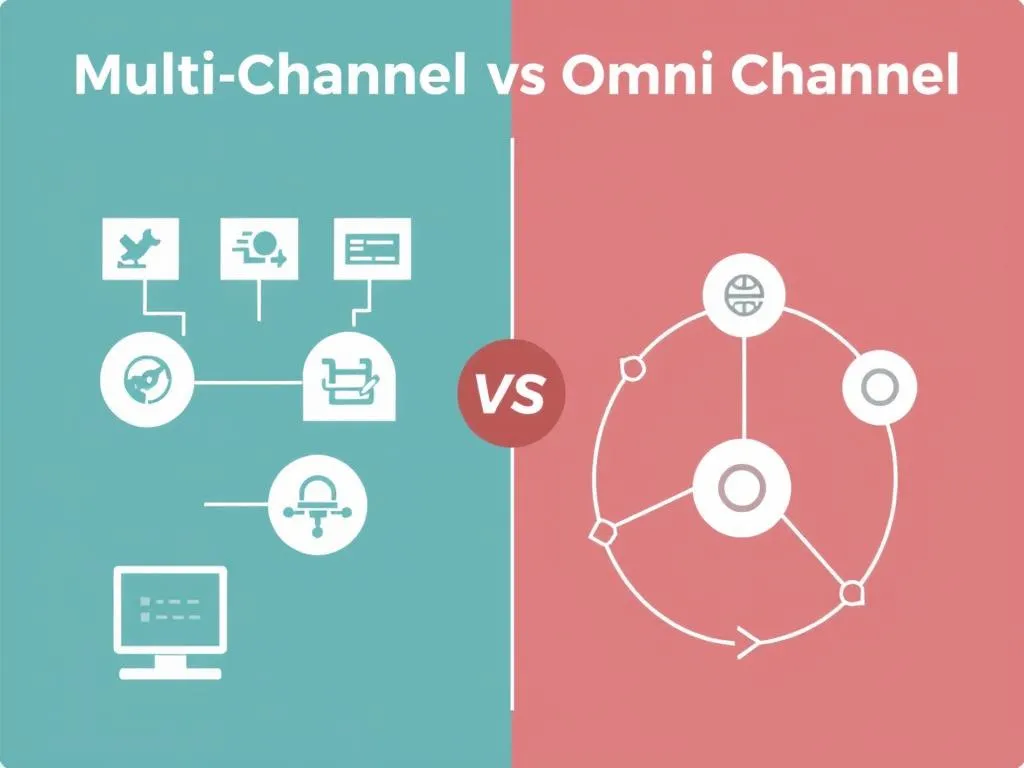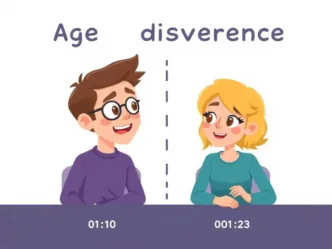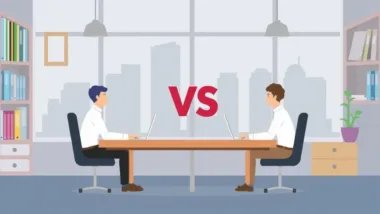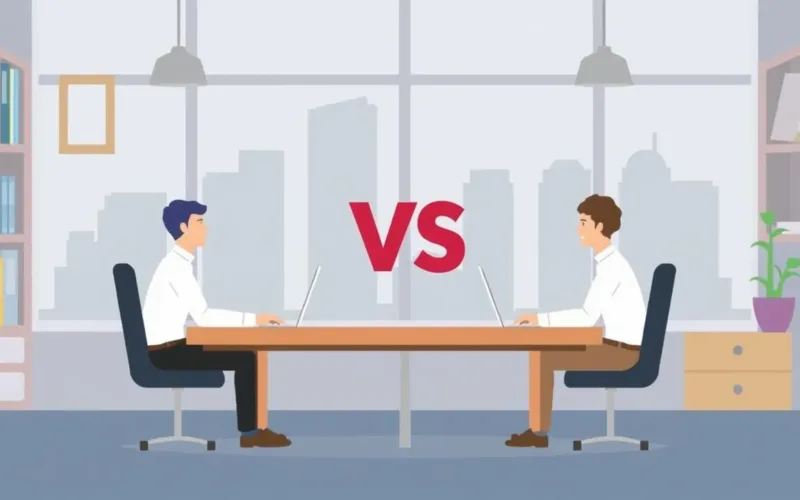Discover the differences between multi channel vs omni channel retailing in our comprehensive guide. Learn how these strategies enhance customer experience, drive sales, and shape the future of retail in 2025.
Multi Channel vs Omni Channel Retailing: A Comprehensive Guide
Multi-channel retailing involves selling through various independent channels, enhancing reach but offering different customer experiences. In contrast, omni-channel retailing integrates these channels for a seamless, consistent customer journey. This unified approach fosters loyalty and personalization, making it crucial for retailers aiming to meet evolving customer expectations.
Introduction
What does it take to thrive in today’s retail landscape, where customers expect convenience, personalization, and flexibility? How can businesses meet these demands while balancing operational efficiency? Multichannel vs omnichannel retailing are two strategies that have emerged to address these challenges, each offering a distinct approach to engaging customers across various platforms. Multi-channel retailing provides multiple points of sale, while omni-channel retailing integrates these channels for a seamless customer experience.
Through a Socratic exploration, this article invites you to reflect on their differences, asking thought-provoking questions to uncover their definitions, benefits, challenges, real-world examples, and future trends. Whether you’re a retailer, a consumer, or simply curious about modern commerce, this guide will deepen your understanding of these strategies in 2025.
What Is Multi-Channel Retailing?
How would you reach customers who shop in different ways—some in stores, others online? Could offering multiple sales channels increase your business’s reach? Multi-channel retailing involves selling products through various independent channels, such as physical stores, e-commerce websites, social media platforms, catalogs, and third-party marketplaces. Each channel operates separately, with its own inventory, pricing, and customer service, aiming to maximize convenience and accessibility for customers.
For example, a clothing retailer might have a brick-and-mortar store, an online shop, and an Instagram storefront. Customers can choose their preferred channel, but the experience—pricing, promotions, or availability—may differ across these platforms. Why might this flexibility appeal to customers, and how could it benefit a business starting out?
What Is Omni-Channel Retailing?
What if you could shop online, add items to your cart, and pick them up in-store without missing a beat? Could a unified experience across all channels make shopping more enjoyable? Omni-channel retailing builds on multi-channel by integrating all sales and communication channels to provide a seamless, consistent customer experience. It focuses on the entire customer journey, ensuring that data, inventory, and branding are synchronized across touchpoints like websites, mobile apps, physical stores, and social media.
For instance, a customer might browse products on a retailer’s app, check in-store availability, and complete the purchase in person, with their loyalty rewards applied automatically. This integration requires advanced technology to track customer interactions and ensure consistency. How might this cohesive approach enhance customer trust, and what challenges could arise in achieving it?
Key Differences Between Multi Channel vs Omni Channel Retailing
What sets these two strategies apart when both involve multiple channels? Could the level of integration be the defining factor? Here’s a detailed comparison based on insights from sources like Lumen Learning and Shopify:
| Aspect | Multi-Channel Retailing | Omni-Channel Retailing |
|---|---|---|
| Definition | Selling through multiple independent channels (e.g., stores, online). | Integrating all channels for a seamless, unified customer experience. |
| Focus | Transaction-focused, maximizing reach across channels. | Customer-centric, ensuring consistency across all touchpoints. |
| Integration | Channels operate separately with minimal data sharing. | Channels are synchronized, sharing data for a cohesive journey. |
| Customer Experience | Varies by channel; pricing or inventory may differ. | Consistent across channels, with unified pricing and services. |
| Infrastructure Needs | Basic systems to manage each channel independently. | Advanced systems for data integration, analytics, and personalization. |
Why might a business choose multi-channel for its simplicity, and when could omni-channel’s integration be worth the investment? How would you balance reach with consistency in your retail strategy?
Real-World Examples
What can successful retailers teach us about these strategies? Could their approaches inspire your own business or shopping habits? Here are two standout examples of omni-channel retailing:
- Nordstrom: This retailer excels at integrating online and offline channels. Customers can browse products on the Nordstrom app, check in-store availability, buy online, and pick up in-store, or return items seamlessly across channels. Personalized recommendations and loyalty rewards are consistent whether shopping online or in person. How might this flexibility enhance your shopping experience?
- Sephora: Sephora’s omni-channel strategy shines through its app, website, and physical stores. Customers can book in-store beauty consultations via the Sephora app, access their Beauty Insider rewards, and use virtual try-on tools online, all while receiving the same personalized service in-store. Why could this unified approach build stronger customer loyalty?
Multi-channel examples include retailers like Apple, which operates physical iStores and an online store, but with less emphasis on seamless integration. For instance, Apple’s in-store experience focuses on product exploration, complementing its e-commerce dominance without fully synchronizing the customer journey across channels (Omnisend).
Benefits of Omni-Channel Retailing
What advantages could omni-channel retailing bring to your business or shopping experience? Might it foster stronger connections with customers? Key benefits include:
- Enhanced Customer Experience: A seamless journey across channels, like adding items to a cart online and picking them up in-store, increases convenience and satisfaction (BigCommerce).
- Increased Sales: Research suggests omni-channel customers spend up to 14% more due to multiple engagement points (Delighted).
- Improved Loyalty: Consistent, personalized experiences build trust, with omni-channel retailers seeing retention rates up to 89% compared to 33% for non-omni-channel (WareIQ).
- Data-Driven Insights: Unified data from all channels enables targeted marketing and better inventory management (McKinsey).
- Competitive Edge: Brands like Starbucks and Target leverage omni-channel to stand out in crowded markets (SAP Emarsys).
How might these benefits influence your retail strategy or shopping preferences? Could personalization make you more likely to return to a brand?
Challenges of Omni-Channel Retailing
What obstacles might you face in adopting omni-channel retailing? Could technology or organizational issues pose hurdles? Key challenges include:
- Technological Complexity: Integrating systems across channels requires robust IT infrastructure, including customer relationship management (CRM) and data analytics (Stibo Systems).
- Data Management: Handling large volumes of customer data while ensuring privacy compliance, such as GDPR, is complex (ChannelSight).
- Organizational Alignment: Departments like marketing, IT, and sales must collaborate closely, which may require cultural shifts (Retail Bulletin).
- Inventory Synchronization: Maintaining real-time inventory across channels to avoid stockouts or overstocking is challenging (Purchase Commerce).
- Cost: The initial investment and ongoing maintenance of omni-channel systems can be significant (Salsify).
Why might these challenges be more daunting for small businesses than large retailers? How could overcoming them lead to long-term gains?
Future Trends in Omni-Channel Retailing
What might the future hold for retail in 2025? Could emerging technologies or consumer trends shape your strategy? Key trends include:
- Mobile Commerce Dominance: By 2025, mobile commerce is expected to account for 59% of e-commerce revenue, reaching $2.5 trillion globally, with retailers optimizing apps for one-click checkout and loyalty programs (SCAYLE).
- AI and Personalization: AI-driven tools, like chatbots and predictive analytics, will enhance tailored experiences across channels (SAP Emarsys).
- Augmented Reality (AR): Virtual try-ons and immersive product demos will bridge online and offline shopping (Bloomreach).
- Unified Commerce: Retailers are moving toward single-platform solutions that integrate sales, fulfillment, and service (Manhattan).
- Sustainability: Consumers increasingly demand eco-friendly practices, prompting retailers to highlight sustainable products across channels (Priority Software).
How might these trends influence your retail strategy or shopping habits? Could mobile apps or AR enhance your customer experience?
Conclusion
What will you do to enhance your retail experience or business strategy? Multi-channel retailing offers flexibility by reaching customers through independent channels, while omni-channel retailing creates a seamless, customer-centric journey through integrated systems. Both have merits, but omni-channel’s focus on consistency and personalization often leads to higher loyalty and sales. By understanding their differences, leveraging examples like Nordstrom and Sephora, and preparing for trends like mobile commerce and AI, you can make informed decisions in 2025. Reflect on your priorities—reach, consistency, or cost—and explore which approach best fits your needs.














Leave a Reply